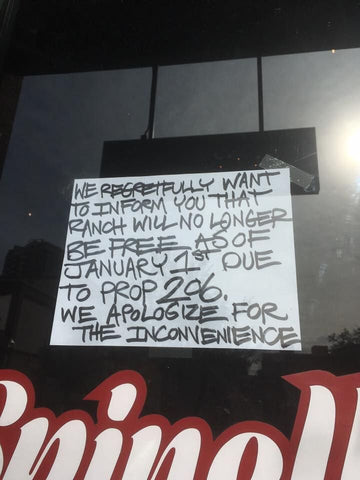
The 15$ Minimum Wage in America – a Twisty Tale
Share

When it comes to the minimum wage, it appears that our states aren’t at all united. It is strange but true that people with exactly the same job, even within the same company, can make wildly different hourly wages. For example, a hostess at Ruth’s Chris Steakhouse in Tulsa makes $7.25 an hour, while her colleague in Boston makes $12 an hour, and yet another colleague in Seattle makes $15 an hour. Why have wages in many cities and states risen in the past few years (and in many cities the raises are scheduled to continue), but in other places, the minimum wage hasn’t risen since 2009?
In 2007, Congress voted to raise the wage from $5.15 and it was set to happen slowly with several .70 raises given over 2 years, landing on $7.25 in 2009, unchanged now for 10 years. 16 states and Puerto Rico currently adhere to the federal minimum wage, 5 states have no minimum wage and the rest pay above the federal minimum rate, with Massachusetts and Washington both offering the highest hourly wage of $12. Of the 29 states - and some specific cities - that pay more, there’s a wide variety of raises occurring, some states are only slightly above the federal wage while others have chosen to “Fight for 15” following the union negotiations from the fast food worker protest in New York City in 2012 and in the first city to raise the minimum wage to $15 – SeaTac, Washington.
The benefits of the rising wages include the immediacy of cash and the predictability of being able to pay bills and better meet the cost of living. By the end of 2018, 22 million low-wage workers in America have achieved over $68 billion through these raises. Workers who are less stressed financially are able to focus on the tasks at hand and are less likely to be planning a leap to another company. And providing the highest wage possible - and one better than others in your industry or your geographical region - looks to be a winning strategy for companies to keep present staff and attract new workers, and it can make for a massive dose of positive PR.
If the benefits of a higher wage for employees are obvious, the drawbacks are too. When the cost of labor is drastically increased, a business owner will instantly look for ways to reduce costs, lest the business might fold. Employee hours and shifts, the opportunity to work overtime, and even entire positions can get cut. Understaffing at restaurants often becomes the default, and some restaurants consider changing how the staff is structured, potentially eliminating servers or having servers take the minimum wage and not accept tips. With servers making quite a bit less than minimum wage, how servers are getting treated between their duties, their wage and their tips has become an often contested (and litigated) issue.
Business owners often pass the cost on to the customer very directly by raising prices or charging for items that were complimentary, like Spinelli’s Pizzeria in Tempe, whose owner demanded customers pay for ranch dressing after Arizona voters approved a proposition to raise the wage incrementally to $12 in 2020 (with the first jump being the biggest, from $8.15 in 2016 to $10 in 2017) or large national chain pizzerias charging for parmesan cheese and red pepper flakes.
With shutting down or raising prices being knee-jerk reactions, what else can restaurants do to cut costs or create new revenue? Tiffany Regaudie of TouchBistro has created a powerful list of strategies that include: experimenting with new pricing strategies, trimming seasonal staff, investing in the right technology, reducing operating hours, redesigning the menu, and focusing on staff retention. She focuses the most on staff retention and mentions “If you reward top-performing employees with promotions, you increase their motivation because they can see a future with your restaurant.” With employee stability already enhanced by rising wages, business owners can go even further and really nurture employee loyalty, which proves to be incredibly valuable as costly turnover is reduced.
It is important to note that the story isn’t over when it comes to rising wages. In some places, the change was so dramatic that it brought about a strong backlash. In Arizona, though 1.4 million voters supported the proposition to raise wages, two Republican senators crafted resolutions to amend the earlier proposition, one of which aims to freeze the wage at $10.50, which is lower than the current $11. Also, states like California would have been wise to create different wages for rural areas as opposed to one blanket rate and perhaps that is why some states are now banning a minimum wage at all in their area (although they still are required to pay the federal wage). Why ban a minimum wage? Perhaps they think that setting a higher wage will somehow strike a lethal blow to the ‘free market’ of capitalism. But the bustling economies of cities like Seattle, San Francisco and New York that have implemented higher wages and the survival of businesses implementing creative problem-solving will prove that their worry isn’t warranted.
